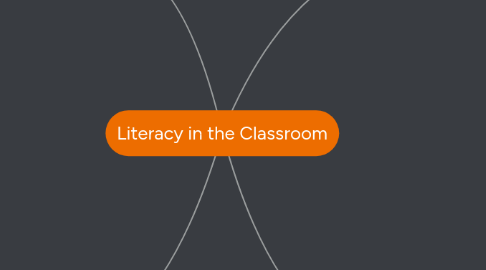
1. READING COMPREHNSION
1.1. Active Reading
1.1.1. Reading of Larger Sections.
1.1.1.1. Notes written throughout the text: within the margins.
1.1.1.1.1. This is the foundation of notes they will use for projects or papers.
1.2. Graphic Organizers
1.2.1. Visual aid for students.
1.2.1.1. Can be used in the Into, Through, and Beyond Stage.
1.2.1.1.1. Leads to class discussion and more student involvement.
1.2.1.1.2. Can be used to Assess Prior knowledge or comprehension of the material.
1.3. Close Reading
1.3.1. Shorter text is examined in depth.
1.3.1.1. Vocabulary is within the text
1.3.1.1.1. Better understanding of the words which leads to comprehension of the content.
2. VOCABULARY: WORD APPRECIATION
2.1. Semantic Gradient
2.1.1. Allows for group discussion.
2.1.1.1. Promotes word appreciation and understanding.
2.1.1.1.1. Word simplification is presented and helps increase word retention.
2.2. Close Reading
2.2.1. Shorter text is used
2.2.1.1. Vocabulary is within the text for better understanding.
2.2.1.1.1. Students have a visual of the word being used in correct context and now have the ability to form their own sentences utilizing their vocab words.
2.3. Vocabulary Activities
2.3.1. Instead of simply providing a list of words for the students to define, activities are a better strategy to implement because they help promote word retention.
2.3.1.1. Students could fill out charts, draw pictures, form sentences, etc. which inevitably helps them understand the word rather than simply memorizing it.
2.3.1.1.1. With a better understanding of the vocabulary that is presented, the students now have more of a chance in comprehending the content.
3. CLASSROOM DISCOURSE
3.1. Group Work
3.1.1. Peers lead discourse over content.
3.1.1.1. Emphasizes better understanding and comprehension.
3.1.1.1.1. Allows the exchanging of ideas for all students. Those who may be too shy to share with the class have an opportunity to speak during group work.
3.2. Classroom Discussion
3.2.1. Teacher is the facilitator.
3.2.1.1. Increase in student involvement and allows for the expansion of ideas.
3.2.1.1.1. The teacher can lead the discussion in the right direction and help clarify anything that is misunderstood. Moreover, this helps students feel more confident in themselves and in the content.
4. NOTE TAKING
4.1. Outline
4.1.1. Identify the main points of the text.
4.1.1.1. Use subheadings to back up the main arguments for content retention.
4.1.1.1.1. Helps create the foundation for potential papers or projects.
4.2. Graphic Organizers
4.2.1. Multiple graphs can be used to facilitate learning and note taking.
4.2.1.1. Helps give the students visual and simplified notes for learning.
4.2.1.1.1. Allows for brainstorming for potential papers and/or projects.
4.3. Active Reading
4.3.1. Done through the reading of larger texts such as a chapter in a book.
4.3.1.1. Student is actively engaged in the reading and taking notes within the margins of the text.
4.3.1.1.1. These notes include main ideas/plot points
4.3.1.1.2. Key characters and/or event/dates.
4.3.1.1.3. Characteristics and arguments that is written throughout the text.
